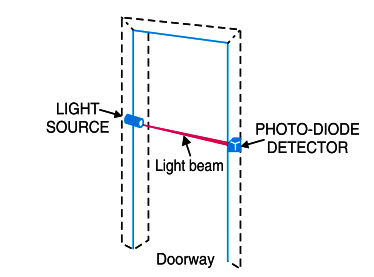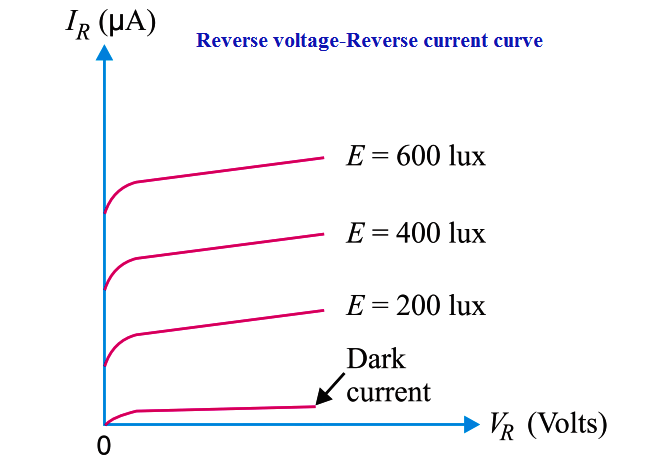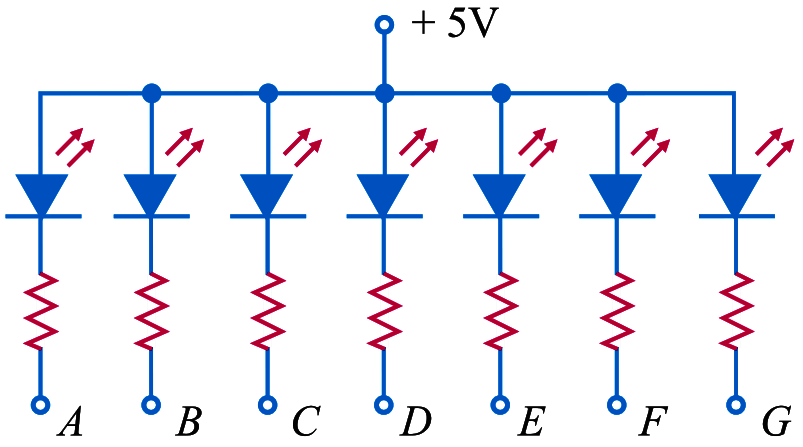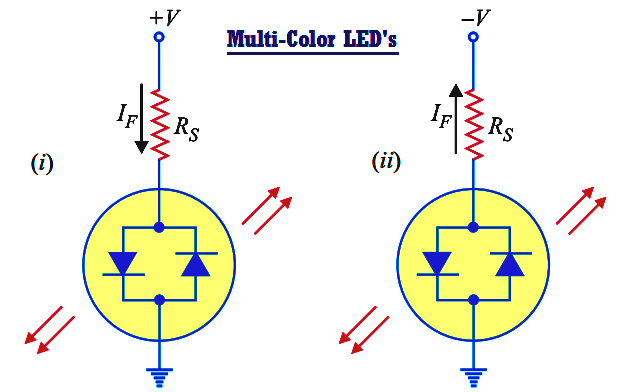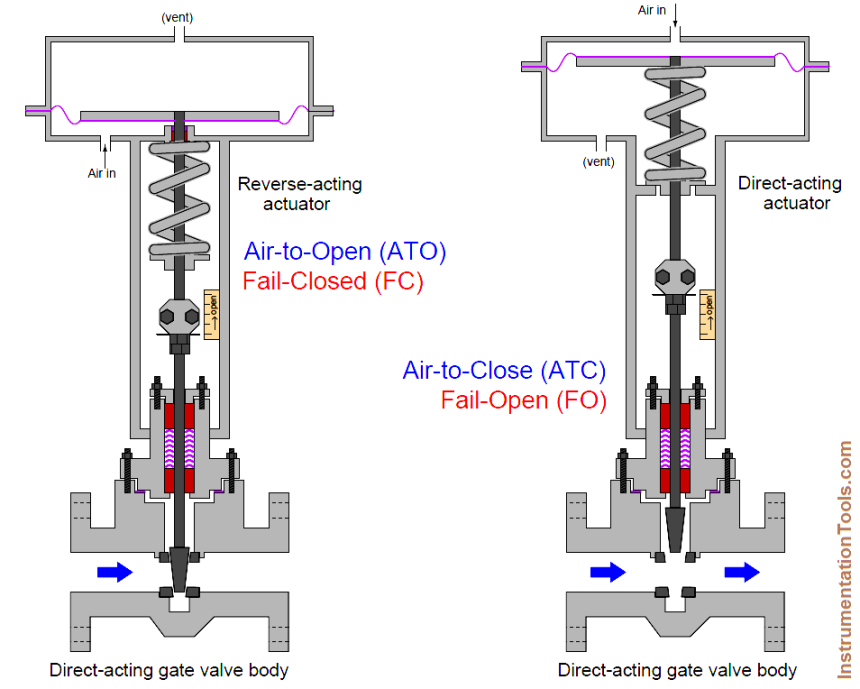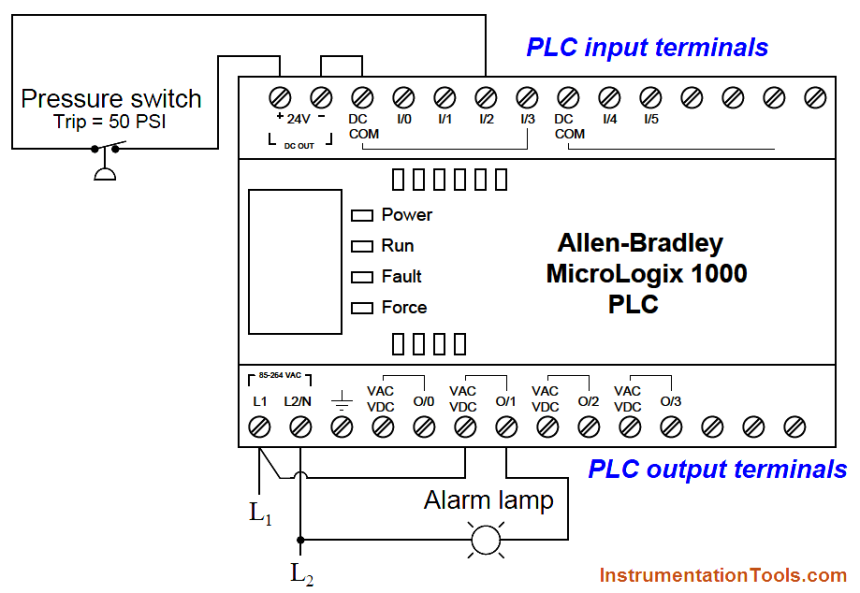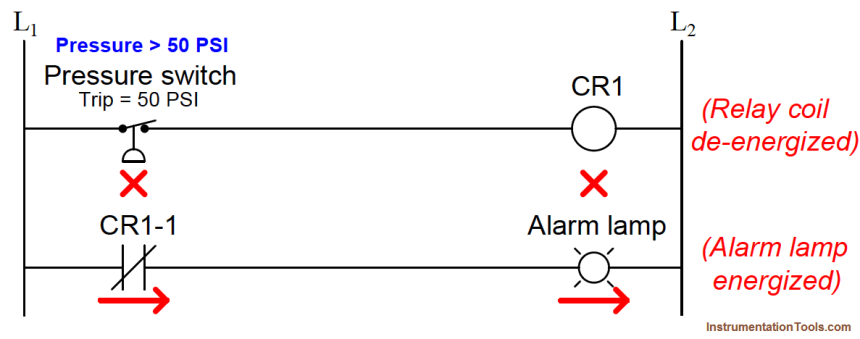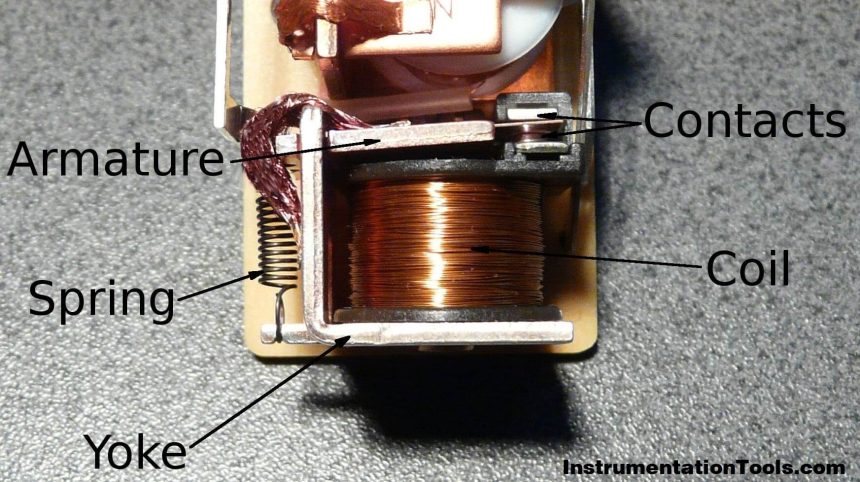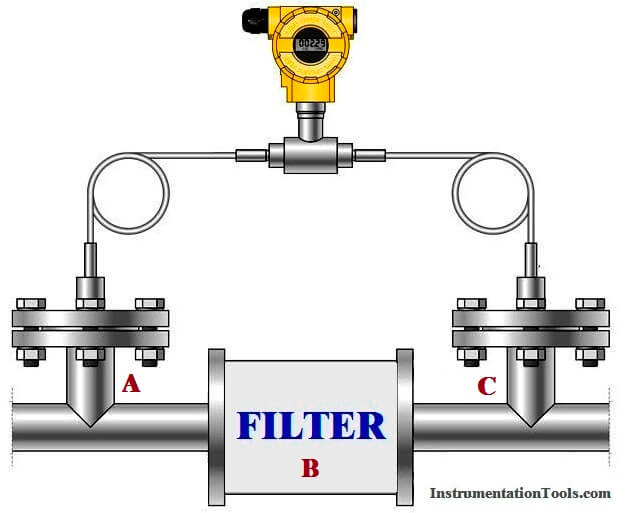Applications of Photo diodes
There are a large number of applications of photo- diodes. However, we shall give two applications of photo-diodes by way of illustration. (i) Alarm circuit using photo-diode. The Below Fig. shows…
Characteristics of Photo diode
There are two important characteristics of photo- diode. (i) Reverse current-Illumination curve. The below Fig shows the graph between reverse current (IR) and illumination (E) of a photo-diode. The reverse…
Seven Segment Display Working Principle
LEDs are often grouped to form seven-segment display. The below Fig. shows the front of a seven segment display. It contains seven LEDs (A, B, C, D, E, F and…
How a Multi Color LED Works ?
A LED that emits one colour when forward biased and another colour when reverse biased is called a multicolour LED. One commonly used schematic symbol for these LEDs is shown…
Diodes Questions & Answers
1. Explain what is a pn junction? The contact surface between the layers of p-type and n-type semiconductor pieces plated together so as to form a p-n junction is called…
Direct Acting Control Valves & Reverse Acting Control Valves
Actuators may be categorized as ‘direct acting’ or ‘reverse acting’ and some configurations are indicated in Below Figure. In a reverse acting actuator an increase in the pneumatic pressure applied to the diaphragm lifts the valve stem (in…
PLC Ladder Logic Example
PLC ladder Logic Example to understand relay control circuits into a virtual form where contacts and coils interact to perform control functions.
Relays in Ladder Logic Tutorials
Electromechanical relays may be connected together to perform logic and control functions, acting as logic elements much like digital gates (AND, OR, etc.). A very common form of schematic diagram showing the…
Relay Principle & its Types
A relay is an electrically operated switch. Many relays use an electromagnet to mechanically operate a switch, but other operating principles are also used, such as solid-state relays. Relays are…
Differential Pressure Sensor for Filtration Monitoring
Differential pressure measurement is the difference in pressure between two points in a system. For filtration applications, the upstream side is positioned before the filter , whereas the downstream side…
